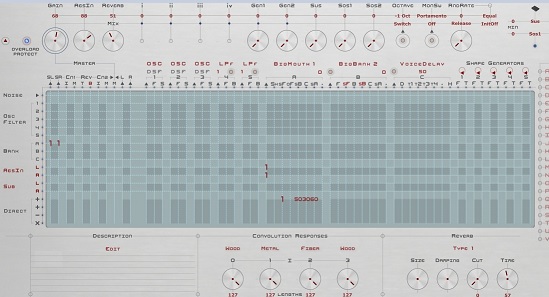https://soundcloud.com/rk53-1/theremin-through-haken-continuum-biqmouth-test
I'm starting this thread to store my experiments using the Haken Continuum as an effect processor for the theremin.
Experimented tonight with creating vocal formants - ala talking machine - though I did not try and create a natural sounding voice. Also added reverb in the continuum.
Ran the line out of the Etherwave Plus into the AES input of the Haken continuum. From there you can channel the audio input into the extremely powerful EaganMatrix sound engine and then with the Continuum Editor create a Matrix patch of your choice to do a zillion different things with the theremin input. The EaganMatrix has a set of biquad modal filters that can be set different ways. One is called BIQMOUTH. This is a chain of five filters that lets you do a variety of formant processing on the input (which here is a theremin - Ed Eagan just released a video where he played the Continuum through MIDI from an EVox and used formants that he fed from internal continuum sound sources).
To do this you will need an A/D converter to convert the theremin analog line out into AES digital format that the continuum uses for an input. Many may not have a way to do this. I use a Behringer Ultramatch Pro which does A/D and D/A with applying different clocking as well - which is very affordable for what it does. There is not much in the EaganMatrix manual for this but it works when set to 96Khz, 16 or 24 bits, no dither. Most decent preamps by the way will also have AES out with adjustable bit rates (my ART vocal preamp works as well). But you should use a digital XLR cable (standard audio XLRs may not work well as the continuum manual points out).
Didn't have much time to do anything but an experiment here that runs through 10 or so different formant vowels - a whole slew are programmable through the matrix with one of the BiqMouth parameters.
Also as Ed Eagan states in the manual - do not experiment with the EaganMatrix with volume way up as some setting cause major sonic explosions - yes they do! - always experiment with volume way down.
There is world of sonic possibilities to process the theremin in many interesting ways through the EaganMatrix. I'll post more here as I get the chance. If anyone wants to know the EaganMatrix settings I use, I'll post a graphic of the programming.



